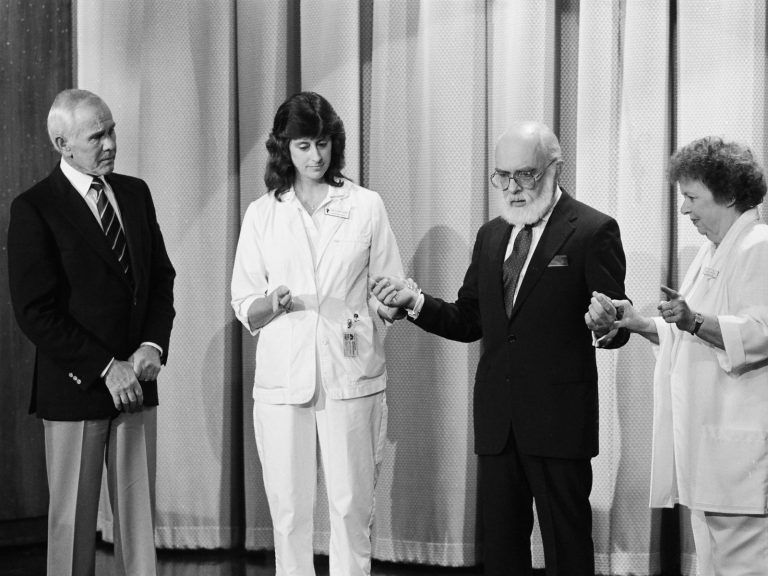
Remote viewing still causes some debate in scientific circles even have decades of experiments. There are those on both sides of the issue and both have good arguments for their case. Psychics claim to use it to help clients who live great distances away.
Remote viewing is being able to gather information about a person or an event even though you can’t visually see it. Those who believe in it say it was used in Ancient Greek times as well as today. Like so many things of supernatural origin, remote viewing grew into vogue in the 1970s when a number of scientific studies began to look into it.
The most famous study was done by Russell Targ, Ph.D., a well-known psychic, at the Stanford Research Institute. He also coined the phrase remote viewing. The work at Stanford drew the interest of the U.S. government. The government, which has previously invested in other psychic experiments, spent more than $20 million dollars on expanding the Stanford project into remote viewing over the next two decades.
The U.S. government experiments, called “Stargate,” used controlled conditions for its experiments. Its planned use was for U.S. defense agencies and its subjects attempted to garner information from all over the world using remote viewing.
While Targ and others believe remote viewing is real, it was labeled as pseudoscience and the program was halted in 1995. There remains no serious scientific date to prove remote viewing is real, even with hundreds of experiments. There is a lack of repeatability and controls to prove reliability in the experiments.
However, those in the psychic community absolutely believe in the power of remote viewing. They also believe it is something anyone can learn, as long as one can achieve a higher level of consciousness. Some people are naturally better at it than others, but all have the ability to learn it, according to psychics.
There are a few steps to practice remote viewing:
- First, you must clear both your body and your mind. You can’t have any stressors or distractions. Remote viewing is basically opening your mind to receive information, so negative thinking must be removed before it can happen.
- Go to a quiet, relaxing space. You must be able to focus on your target without extra noise in the background.
- Start meditating. You can hum, listen to a song or do something that puts you in a meditative state. This is the only way you can perceive information.
- Start with simple experiments. Psychics say remote viewing is like a muscle, you have to start with small practice sessions and build up to go great distances. You can have a friend outside the door of the room to be your target for perception. Have them do different things in the other room and you try to figure out what your friend is doing.
You can ask your friend to place images in envelopes. Images should be specific like a house, a flower or an animal. Then, you focus to determine the pictures inside the envelopes. Write down the information and then see if you are correct.
It’s okay if you aren’t. Psychics say it takes time to refine the skill. While many don’t believe in this particular skill, it will not hurt to practice it if you are curious. At worst, practicing remote viewing will help you develop mind concentration and higher consciousness levels.
Plus, it could be a fun experiment to work on in your spare time to relieve stress. Remote viewing will never be fully understood or explained, but it can be harnessed for those who wish to seek it.
The concept of remote viewing continues to intrigue both skeptics and believers. The efforts to scientifically validate it, particularly by the U.S. government, highlights its perceived potential. Although it lacks scientific validity, the practice could still offer psychological benefits.
It’s fascinating to see how remote viewing has had historical and modern applications. The involvement of the U.S. government in the Stanford project and the Stargate program suggests there was significant interest, even if the results were inconclusive.
Indeed, the government’s investment speaks volumes about the potential they saw in the research. It’s a pity the results didn’t meet scientific standards, but the journey itself is noteworthy.
The lack of repeatability and control in remote viewing experiments is a significant barrier to its scientific acceptance. However, the continuous interest and anecdotal success stories ensure this topic remains in public discourse.
Remote viewing is an intriguing subject that bridges science and mysticism. While it hasn’t been proven scientifically, the structured exercises could serve as a tool for mental training. The personal development aspect should not be overlooked.
While remote viewing lacks empirical evidence, the structured approach to practice it, as described in the article, might help individuals enhance their concentration and mindfulness. These are beneficial skills regardless of one’s belief in remote viewing.